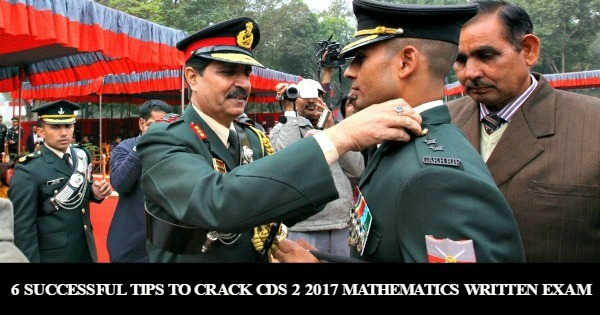The objective type question paper includes various topics of elementary mathematics. Candidates should have posses knowledge about these topics. In this article we are sharing 6 Must Know Tips for CDS 2 2017 Mathematics Exam Preparation.
6 Successful Tips to Crack CDS 2 2017 Mathematics Written Exam

- Always read math problems completely before beginning any calculations. If you “glance” too quickly at a problem, you may misunderstand what really needs to be done to complete the problem.
- Whenever possible, draw a diagram. Even though you may be able to visualize the situation mentally, a hand drawn diagram will allow you to label the picture, to add auxiliary lines, and to view the situation from different perspectives.
- Do not feel that you must use every number in a problem when doing your calculations. Some mathematics problems have “extra” information. These questions are testing your ability to recognize the needed information, as well as your mathematical skills.
- Remember, that it may be necessary to “solve” for additional information in a problem before being able to arrive at the final answer. These questions are called “two-step” problems and are testing your ability to recognize what information is needed to arrive at an answer. If you are “stuck” on a particular problem, go on with the rest of the test. Oftentimes, while solving a new problem, you will get an idea as to how to attack that difficult problem.
- If you simply cannot determine the answer to a question and not even attempted 40 percent of paper, make a guess. Think about the problem and the information you know to be true. Make a guess that will be logical based upon the conditions of the problem. In certain problems, you may be able to “guess” at an approximate (or reasonable) answer. After you perform your calculations, see if your final answer is close to your guess.
- Be sure that your answer is logical. For example, if a question asks you to find the number of meters in a problem and your answer comes out to be a negative number, know that this answer is incorrect.



















